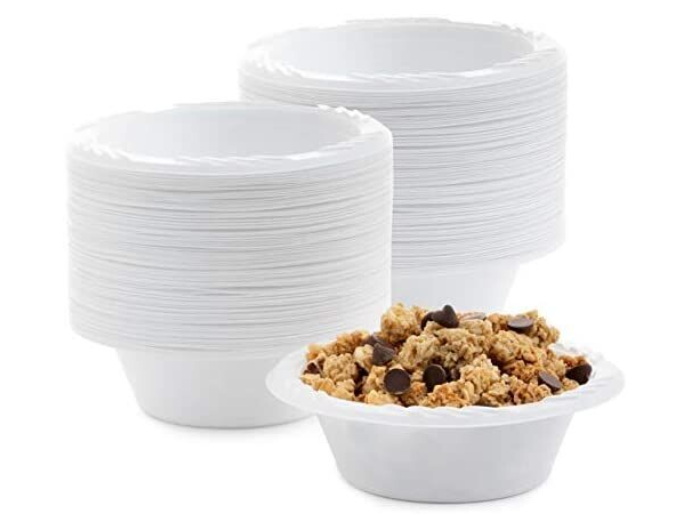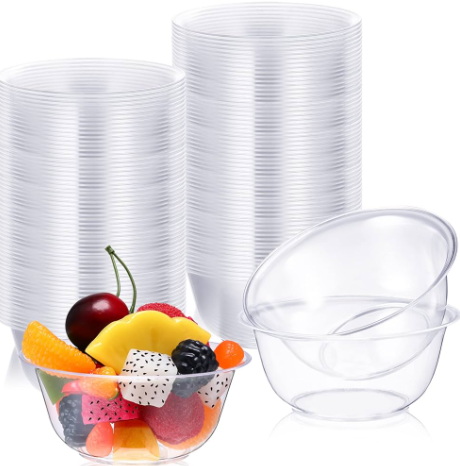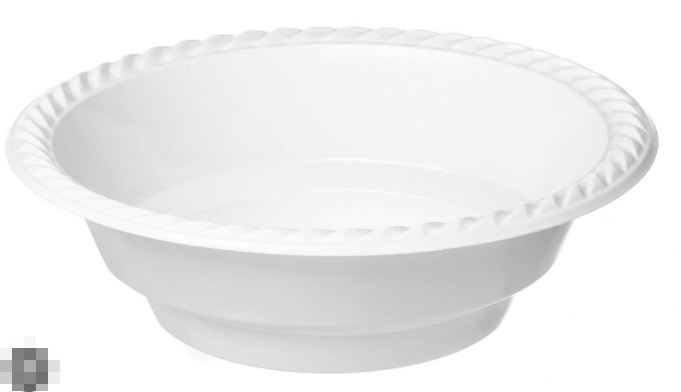
Content Menu
● Introduction to Disposable Plastic Salad Bowls
>> Materials Used in Disposable Plastic Salad Bowls
● Durability Factors
>> Impact of Material Thickness
● Eco-Friendly Alternatives: RPET Salad Bowls
>> Advantages of RPET Salad Bowls
● Market Trends and Consumer Adoption
>> Challenges and Opportunities
● Disposable vs. Reusable Plastic Salad Bowls
>> Benefits of Reusable Bowls
● Choosing the Right Disposable Salad Bowl
>> Tips for Using Disposable Plastic Salad Bowls
● Conclusion
● Frequently Asked Questions
>> 1. What Materials Are Disposable Plastic Salad Bowls Made Of?
>> 2. How Durable Are RPET Salad Bowls?
>> 3. What Are the Benefits of Using Reusable Plastic Salad Bowls?
>> 4. How Do I Choose the Right Disposable Salad Bowl?
>> 5. Are Disposable Plastic Salad Bowls Environmentally Friendly?
● Citations:
Disposable plastic salad bowls have become a staple in modern dining, offering convenience and ease of use for both personal and commercial purposes. However, their durability is a critical factor to consider, especially when serving heavy or hot foods. In this article, we will delve into the durability of disposable plastic salad bowls, exploring their materials, designs, and applications.

Introduction to Disposable Plastic Salad Bowls
Disposable plastic salad bowls are made from various types of plastic, each with its own set of characteristics. The most common materials include polypropylene (PP), polystyrene (PS), and polyethylene terephthalate (PET). Polypropylene is known for its strength and durability, making it suitable for heavier foods like pasta or salads with dressings[1]. On the other hand, polystyrene is lighter and less durable, often used for lighter snacks or desserts[1].
Materials Used in Disposable Plastic Salad Bowls
- Polypropylene (PP): Stronger and more durable than polystyrene, ideal for heavier foods.
- Polystyrene (PS): Lightweight and less durable, suitable for light snacks.
- Polyethylene Terephthalate (PET): Often used in recyclable and eco-friendly options like RPET.
Durability Factors
The durability of disposable plastic salad bowls depends on several factors:
1. Material Thickness: Thicker bowls are generally more durable and less likely to crack or bend under weight[1].
2. Reinforced Designs: Some bowls have reinforced sides or additional layers to enhance strength[1].
3. Usage Conditions: Exposure to heat, cold, or heavy foods can impact durability.
Impact of Material Thickness
Thicker plastic bowls are designed to withstand heavier loads without collapsing. They are ideal for substantial meals like stews or pasta salads.
Eco-Friendly Alternatives: RPET Salad Bowls
RPET (Recycled Polyethylene Terephthalate) salad bowls offer a sustainable alternative to traditional disposable plastic bowls. Made from post-consumer plastic waste, RPET bowls are durable, BPA-free, and fully recyclable, promoting a circular economy[2].
Advantages of RPET Salad Bowls
- Sustainability: Reduces the need for virgin plastic and promotes recycling.
- Food Safety: BPA-free to ensure no harmful chemicals leach into food.
- Durability: Resists cracks and scratches, making them suitable for everyday use.
Market Trends and Consumer Adoption
As consumers become more environmentally conscious, the demand for sustainable packaging like RPET salad bowls is increasing. Retailers and restaurants are adopting these eco-friendly options to appeal to a wider audience[2].
Challenges and Opportunities
- Challenges: Higher initial cost compared to traditional plastic bowls.
- Opportunities: Technological advancements are reducing production costs, making RPET more accessible.

Disposable vs. Reusable Plastic Salad Bowls
While disposable plastic bowls are convenient, reusable options are gaining popularity due to their cost-effectiveness and environmental benefits. Reusable bowls can be made from durable plastics or other materials like stainless steel or glass.
Benefits of Reusable Bowls
- Cost-Effective: Saves money in the long run.
- Environmental Benefits: Reduces plastic waste.
Choosing the Right Disposable Salad Bowl
When selecting a disposable plastic salad bowl, consider the following factors:
1. Material: Look for BPA-free and durable materials.
2. Size: Choose a size that fits your serving needs.
3. Design: Opt for bowls with secure-fitting lids for easy transport.
Tips for Using Disposable Plastic Salad Bowls
- Use them for light to medium-weight foods.
- Avoid exposing them to extreme temperatures.
- Consider eco-friendly alternatives like RPET.
Conclusion
Disposable plastic salad bowls offer convenience and ease of use, but their durability varies based on material and design. While traditional plastic bowls are durable, eco-friendly options like RPET are gaining traction due to their sustainability and durability. As consumers become more environmentally conscious, the demand for sustainable packaging is expected to rise.

Frequently Asked Questions
1. What Materials Are Disposable Plastic Salad Bowls Made Of?
Disposable plastic salad bowls are typically made from materials like polypropylene (PP), polystyrene (PS), and polyethylene terephthalate (PET). Polypropylene is stronger and more durable, while polystyrene is lighter and less durable[1].
2. How Durable Are RPET Salad Bowls?
RPET salad bowls are designed for everyday use and are durable, resisting cracks and scratches. They are also BPA-free and fully recyclable, making them a sustainable choice[2].
3. What Are the Benefits of Using Reusable Plastic Salad Bowls?
Reusable plastic salad bowls are cost-effective in the long run and offer environmental benefits by reducing plastic waste. They are also durable and can be used multiple times[3].
4. How Do I Choose the Right Disposable Salad Bowl?
When choosing a disposable salad bowl, consider the material (look for BPA-free options), size (ensure it fits your serving needs), and design (opt for bowls with secure-fitting lids)[5].
5. Are Disposable Plastic Salad Bowls Environmentally Friendly?
Traditional disposable plastic salad bowls are not environmentally friendly due to their contribution to plastic waste. However, eco-friendly alternatives like RPET bowls are made from recycled materials and are fully recyclable, promoting sustainability[2].
Citations:
[1] https://www.sweetflavorfl.com/blog/what-to-look-for-when-buying-disposable-plastic-bowls-n31
[2] https://www.easyngreen.com/what-is-rpet-salad-bowl.html
[3] https://www.ebay.co.uk/itm/175673240104
[4] https://www.sweetflavorfl.com/138-salad-containers
[5] https://www.sweetflavorfl.com/blog/everything-you-need-to-know-about-disposable-salad-bowls-n14
[6] https://www.efavormart.com/products/4-pack-plastic-salad-bowls-32oz-clear-medium-disposable-serving-dishes-for-salads
[7] https://www.istockphoto.com/photos/salad-plastic-container
[8] https://www.restaurantware.com/collections/disposable-bowls-take-out-bowls-lids
[9] https://smartyhadaparty.com/blogs/home/the-plastic-bowls-kingdom-the-ultimate-solution-for-your-salad-needs
[10] https://tonyhong78ah.en.made-in-china.com/product/hBpxeTHCAVkj/China-Disposable-Takeaway-Plastic-Salad-Bowl-with-Lid.html
[11] https://emeraldecovations.com/2024/09/the-convenience-and-sustainability-of-disposable-bowls/
[12] https://manluenpack.en.made-in-china.com/product/XJoRmfnGqjce/China-High-Durability-Customized-Plastic-Disposable-Food-Container-Microwavable-Salad-Fruit-Vegan-Ramen-Bowl-with-Anti-Fog-Lid.html
[13] https://gmgreencity.com/factsheet-plastic-plates-trays-and-bowls/
[14] https://www.lifecycleinitiative.org/wp-content/uploads/2021/03/UNEP-D001-Tableware-Report_Lowres.pdf
[15] https://www.efavormart.com/products/10-pack-plastic-round-soup-bowl-12oz-white-with-gold-vine-royal-blue-rim-durable-disposable-salad-dessert-bowls-for-weddings-banquets
[16] https://www.hotpackglobal.com/blogs/the-complete-guide-to-choosing-the-ideal-disposable-bowl-for-hot-soup/
[17] https://www.mdpi.com/2071-1050/17/4/1434
[18] https://www.unitedpakstore.com/blog/plastic-extra-large-bowls-durable-versatile-solutions
[19] https://www.justsalad.com/reusablebowl
[20] https://www.dayuplastic.com/news/industry-news/the-advantages-and-challenges-of-disposable-pp-plastic-bowls.html
[21] https://jianxinplastic.en.made-in-china.com/product/EsJmkFQCEOcy/China-Disposable-Plastic-PP-Salad-Bowl-with-Lid-Food-Packing-Bowls.html
[22] https://greenpaperproducts.com/blog/beyond-convenience-the-environmental-impact-of-single-use-plastics-vs-compostable-alternatives

















